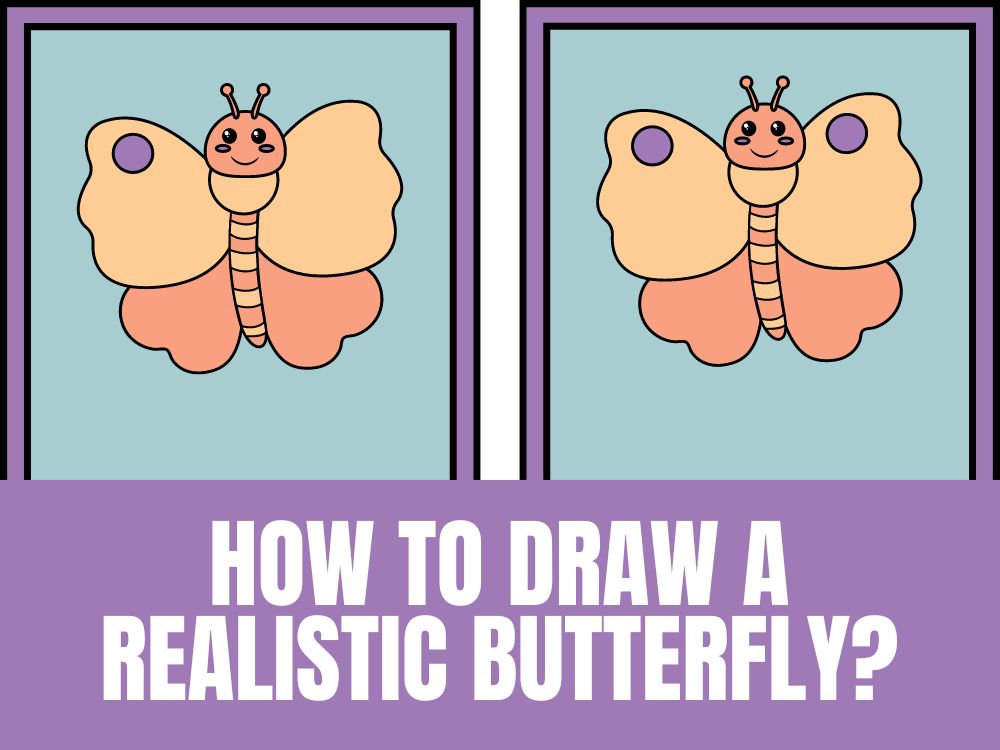While drawing realistic butterflies can seem challenging at first, even beginners can create stunning lifelike masterpieces with ease using some simple tips and steps from this blog. We will walk through some simple strategies so that you can draw realistic butterflies more effortlessly!
1. Outline of a Butterfly
Begin by outlining the basic shape of a butterfly on paper. Draw an oval for its body in the center, followed by two large wings on either side with slightly larger top ones than bottom ones – no need to worry about perfect symmetry yet; details will follow soon enough!
2. Focus on Symmetry
Butterflies are known for having perfectly symmetrical wings. To mimic this appearance, draw a vertical line down the center of your body as a guide and use this line as an aid when drawing wings – this will ensure both sides match evenly when creating shapes on either side of it. When drawing wings try mirroring shapes either side of this vertical line when drawing them.
3. Apply Wing Patterns
Butterflies feature intricate patterns on their wings that may seem complicated at first, but you can simplify their intricate designs into simpler forms by starting with larger shapes like circles or ovals and filling in any open areas with smaller patterns based on reference images of real butterflies. Remember not to copy every detail – instead focus on capturing their essence!
4. Refine and Add Details
Once you have the basic outline and patterns down, it’s time to refine and add details to your Butterfly Drawing. Smooth out its lines on its wings and body so the shapes are clear and clean, add antennae for antennae support and small lines on wings to indicate texture if necessary, antennae as antennae are great ways to make your butterfly more lifelike and add antennae for antenna support if possible – anything to make your drawing more realism!
5. Shade for Depth
To make your butterfly drawing appear more realistic, add shading to its wings and body. Lightly shade areas where darkness occurs naturally such as edges of wings or underside of body to give your drawing depth and realism. Gradually build up this effect over time for maximum results! This will add dimension and depth.
6. Bring Your Drawing to Life
Want to elevate your drawing further? Try adding color. Butterflies are known for their vibrant and varied palette, so feel free to experiment. Using colored pencils, markers or even watercolors you can layer light layers of color gradually until the intensity builds up over time – remembering their natural hues while adding your personal creative touch!
7. Add Final Details
Its Now it’s time to take one last look at your drawing, making any final adjustments necessary to ensure it looks balanced and realistic. If you are satisfied with what you see, you have successfully created an authentic butterfly!
Conclusion
Although drawing realistic butterflies may initially seem challenging, by taking small steps you can easily achieve stunning and realistic pieces of artwork. Remember to focus on symmetry and use reference images for patterns while not rushing the process; with practice you’ll soon discover that drawing realistic butterflies becomes easier and more enjoyable! So grab your pencils, and start creating your own butterfly masterpiece!

